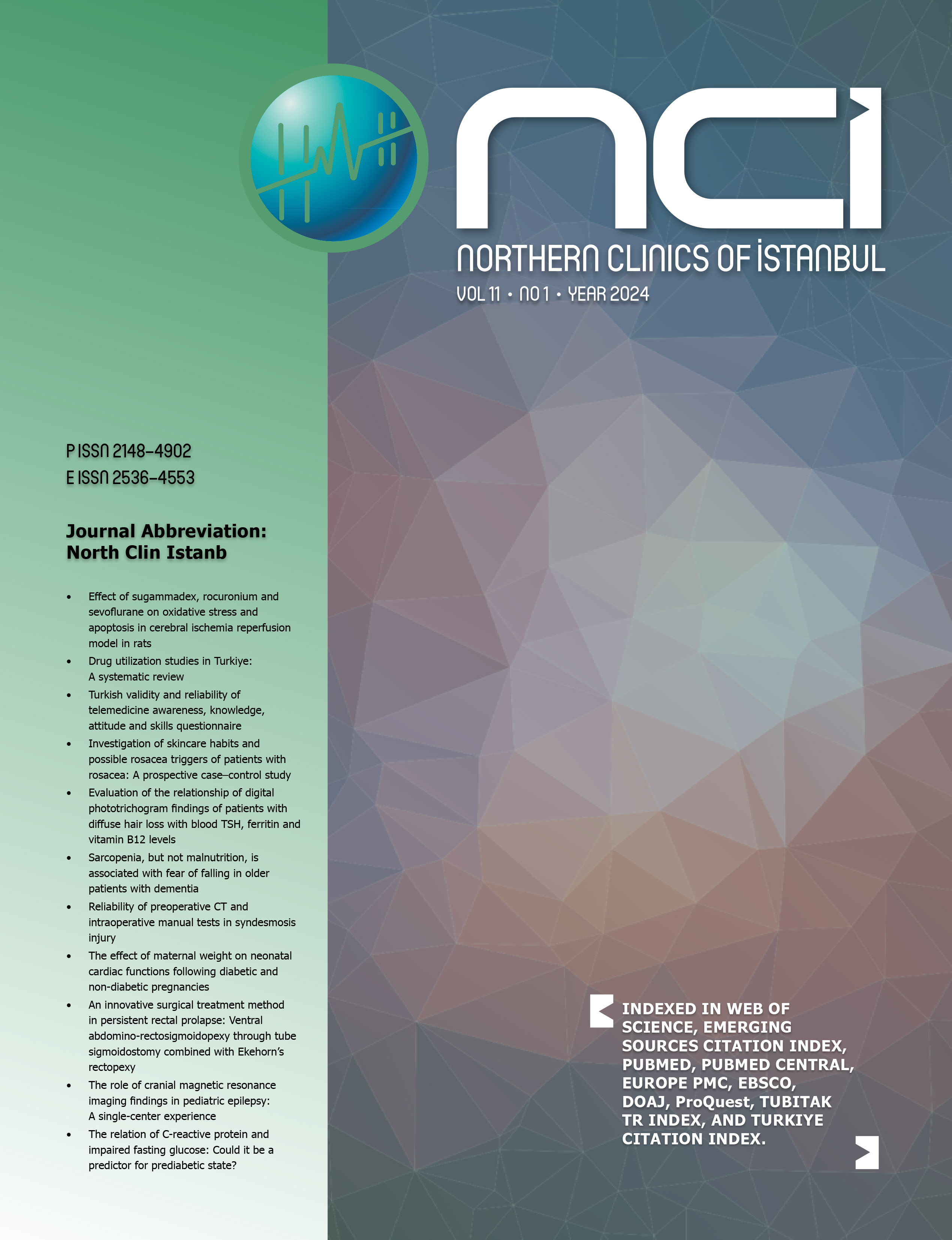Evaluation of the gastrointestinal stromal tumors for clinical features, histopathological findings and prognostic criteria: A case-control study
Tolga Canbak1, Baris Bayraktar2, Aylin Acar1, Rafet Yigitbasi31Department of General Surgery, University of Health Science, Umraniye Training and Research Hospital, Istanbul, Turkey2Department of General Surgery, Gebze Konak Hospital, Gebze, Turkey
3Department of General Surgery, Central Hospital, Istanbul, Turkey
OBJECTIVE: In this study, we reviewed GISTs with all morphological and immunohistochemical findings and assessed the prognostic parameters of these tumors.
METHODS: Files of 40 cases with GIST operated between 2002 and 2008 were retrospectively examined in this study. Patients were grouped as patients with and without recurrence within postop 1 year. The patients were grouped based on their localization, gender and age. The cases were stratified as the risk grades based on risk categorization table developed by Fletcher et al. according to the tumor diameter and number of mitoses. The cases were immunohistochemically investigated for CD117, CD34, S100, and Ki-67.
RESULTS: Male/female ratio was 25/15. The mean age was 61.55. Mean tumor diameters were statistically significantly higher in the recurrence (+) group than in the recurrence (-) group (p=0.048). The mean number of mitoses was statistically significantly higher in the recurrence (+) group than in the recurrence (-) group (p=0.038). No statistically significant difference was found in histological distribution of the recurrence (-) and recurrence (+) groups (p=0.8795). No statistically significant difference was found in CD34, S100, and Ki-67 distribution of the recurrence (-) and recurrence (+) groups (p=0.862, p=0.609, and p=0.023, respectively). All patients in the recurrence (+) group were in the high-risk group.
CONCLUSION: GISTs are studied in a wide range from benign, incidental tumors to malignant tumors with the risk for recurrence and metastasis concerning biological behaviour. GISTs have prognostic parameters, such as tumor localization, tumor diameter, mitotic index, cellularity, and pleomorphism grade.
Gastrointestinal Stromal Tümörlerin Klinik Özellikler, Histopatolojik Bulgular ve Prognostik Kriterler Açısından Değerlendirilmesi: Vaka- Kontrol Çalışma
Tolga Canbak1, Baris Bayraktar2, Aylin Acar1, Rafet Yigitbasi31Ümraniye Eğitim ve Araştırma Hastanesi, Sağlık Bilimleri Üniversitesi, Genel Cerrahi Kliniği, İstanbul, Türkiye2Gebze Konak Hastanesi, Genel Cerrahi Kliniği, Gebze, Türkiye
3Merkez Hastanesi, Genel Cerrahi Kliniği, İstanbul, Türkiye
GİRİŞ ve AMAÇ: Çalışmamızda GİSTler tüm morfolojik ve immunohistokimyasal bulgular ile gözden geçirilmiş, prognostik parametreleri değerlendirilmiştir.
YÖNTEM ve GEREÇLER: 2002-2008 yıllarında opere edilen 40 GİST vakası, retrospektif olarak incelendi. Postoperatif 1 yıl içinde nüks saptananlar ve saptanmayanlar olarak gruplandırıldı. Lokalizasyonlarına, cinsiyetlerine ve yaşlarına göre gruplandırıldı. Vakalar tümörün biyolojik davranışını göstermek amacıyla, Fletcher ve arkadaşlarının tümör çapı ve mitoz sayısına göre hazırladığı risk kategorizasyonu tablosu temel alınarak, risk derecelerine ayrıldı. Vakalar, immunhistokimyasal olarak CD117, CD34, S100, Ki-67 yönünden incelendi.
BULGULAR: Erkek / kadın oranı 25/15 idi. Yaş ortalaması 61.55 idi. Ortalama tümör çapları nüks (+) grupta nüks (-) gruba göre istatistiksel olarak anlamlı derecede yüksekti (p = 0.048). Ortalama mitoz sayısı nüks (+) grupta nüks (-) gruba göre istatistiksel olarak anlamlı derecede yüksekti (p = 0.038). Nüks (-) ve nüks (+) gruplarının histolojik dağılımında istatistiksel olarak anlamlı bir fark bulunmadı (p = 0.8795). Nüks (-) ve nüks (+) gruplarının CD34, S100 ve Ki-67 dağılımlarında istatistiksel olarak anlamlı fark bulunmadı (sırasıyla, p = 0.862, p = 0.609 ve p = 0.023;). Nüks (+) grubundaki tüm hastalar yüksek risk grubunda idi.
TARTIŞMA ve SONUÇ: GİSTler biyolojik davranış açısından, benign rastlantısal bulunabilen tümörlerden, nüks ve metastaz riskine sahip, malign tümörlere kadar uzanan geniş bir yelpazede incelenirler. Tümör lokalizasyonu, tümörün çapı, mitotik indeks, hücresellik, pleomorfizm derecesi gibi prognostik parametreleri bulunur. (NCI-2019-0059.R1)
Manuscript Language: English





















